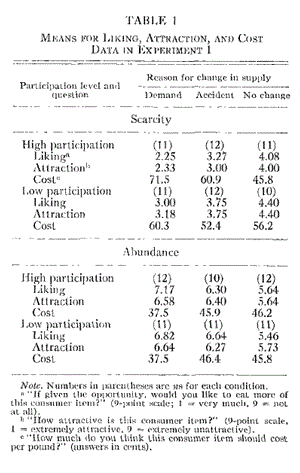Scarcity – a rather effective persuasion technique which
uses the fact that people are more attracted to rare objects, because they
believe these objects to have more value as well as giving the owner an
increased sense of uniqueness and individuality.
An example of “scarcity” in action is the concept of limited
edition. Many companies launch a more unique version of their product (most
likely more expensive than the regular version too), which is also limited in
stock, for instance a limited edition perfume with a unique scent, or a solid
gold iPhone. And it seems that people are drawn to such products in order to
feel that they own something special.
The advertisement below is for limited edition bottles of
Diet Coke designed by Jean Paul Gaultier. A quick search on ebay will show that
sets of these bottles are being sold for £20-£50, giving us solid proof that
this technique really works, although I must say I personally find it very
difficult to understand why anyone would spend so much money on some aluminium
bottles of Coke…
Stephen Worchel, Jerry Lee and Akanbi Adewole (1975)
conducted some interesting experiments on the subject involving cookies.
We will look more closely at the first experiment conducted
with 146 female students from the University of North Carolina. In this
experiment, the subjects were led to a room with a table, on which there was a
can of Pennsylvania Dutch butter mints, a package of Yorkshire Slim cigars and
a glass jar with either 2 or 10 cookies. The students were told by the experimenter
that the aim of the experiment was to identify variables that affect a person’s
preferences for different products and that they would be required to sample
these products and rate them on different aspects. The cookies was the first
item to be sampled, and at the right time the experimenter in the room sent a
signal to another experimenter, who entered the room and a variety of
situations were played out:
1.
Scarce
change, demand – the second experimenter has a jar of two cookies, claims
that the subjects have eaten more cookies than expected and asked if he could
get some more. The first experimenter then suggests to swap jars (the jar on
the table has 10 cookies).
2.
Scarce
change, accident – same procedure, except second experimenter claims that
the jars have been accidentally switched, then gives the first experimenter the
one with two cookies
3.
Scarce,
no change – jar on table has two cookies, second experimenter comes in
without another jar, just asks about the supply of cookies
4.
Abundant
change, demand/accident – very similar procedure to 1 and 2, except the jar
on the table originally has two cookies, and it is swapped for a jar with 10
cookies
5.
Abundant,
no change – jar on table has 10 cookies, second experimenter again comes in
without a jar and simply asks about the supply of cookies
After one of these situations has been played out by the
experimenters, the subjects were also told either that this research was
expensive so there was only a small number of participants, or that there was
still a large number of participants left.
We can see from the table that in each case, when the means for liking the cookies are compared for situations when the cookies were scarce and in abundance, that subjects liked the cookies more when they were scarce (the difference was especially large in the demand/accident situations, showing that perhaps an item seems better when it appears that more people want it). The results for how attractive the subjects found the cookies are very similar.
As for cost, the cookies were rated as more expensive in the
scarcity change conditions than in the abundant change conditions. However, it
seems that demand might not necessarily be a key factor as the cookies were overall
rated as more expensive in the low participation conditions, than in the high
participation conditions.
“Scarcity” is a powerful persuasion technique, be it
perfume, cars, or designer Coke bottles being sold for large amounts of money. It
seems that objects in scarce supply are more attractive and people believe that
possessing such objects will give them a heightened sense of individuality. As we have seen, even research tells us that
people prefer cookies when they are in scarce supply.
Yana Efimova
Sources:
[1] The Science of Social Influence, Anthony R. Pratkanis,
p. 57
[2] Effects of Supply and Demand on Ratings of Object Value,
Stephen Worchel, Jerry Lee, Akanbi Adewole, Journal of Personality and Social
Psychology 1975, Vol. 32, No. 5, 906 - 914



No comments:
Post a Comment
Note: Only a member of this blog may post a comment.